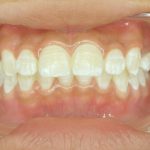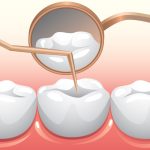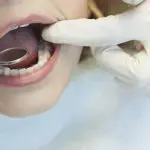Say Goodbye to Brown Stains on Teeth Near Gums with These Simple Tips
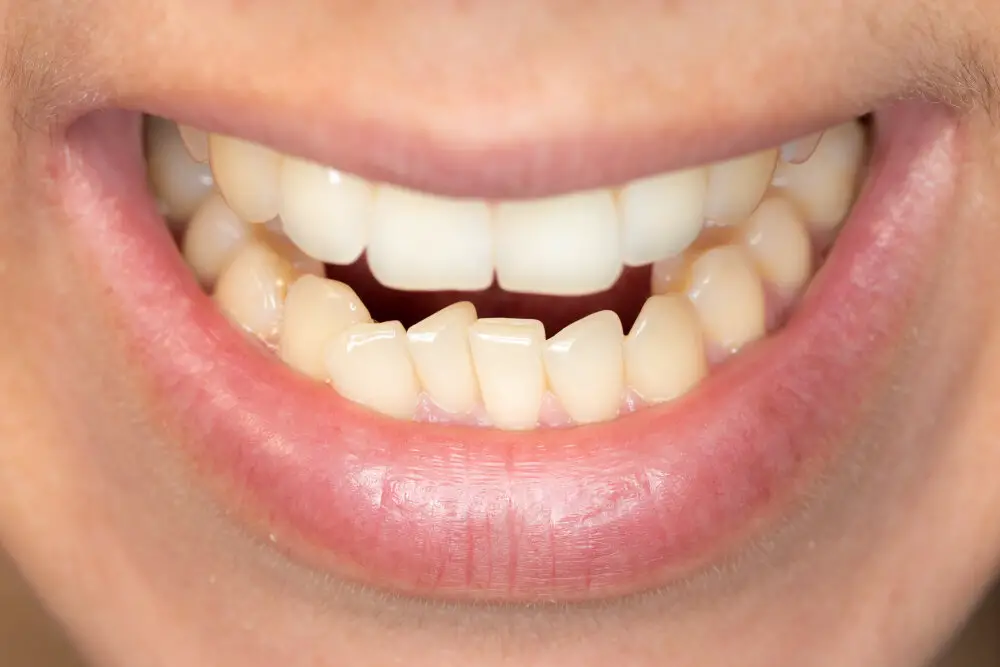
If you’ve ever caught a glimpse of brown stains around your teeth near your gums, you know how embarrassing and unsightly they can be. These stains are usually caused by a buildup of plaque, tartar, and even coffee or tobacco stains. Fortunately, there are several simple steps you can take to eliminate these pesky stains and restore your smile to its former brilliance. One of the most effective ways to prevent and eliminate brown stains on your teeth near your gums is to practice good oral hygiene. This includes brushing your teeth twice a day with a fluoride toothpaste, flossing daily, and using an antimicrobial mouthwash. By removing the daily buildup of food particles, bacteria, and plaque, you’ll be able to keep your teeth and gums healthy and free from stains. Additionally, regular dental checkups and cleanings can help remove any stubborn stains that you may have missed during your daily oral hygiene routine.
Brown stains on teeth near gums can be caused by a variety of factors such as poor oral hygiene, tobacco use, certain medications, and consuming dark-colored foods and drinks. These stains are often a result of the buildup of plaque and tartar on teeth which can be difficult to remove with regular brushing alone. However, there are several simple tips that can help reduce the appearance of brown stains, including regular dental cleanings, brushing with baking soda, and limiting consumption of dark-colored foods and drinks. By following these tips, individuals can improve the overall appearance of their teeth and maintain good oral health.
Maintaining good oral hygiene is essential for overall health and well-being. Poor oral hygiene can lead to a variety of dental problems, including gum disease, cavities, and tooth loss. These issues can also lead to more severe health problems, such as heart disease, stroke, and diabetes. Regular brushing and flossing, as well as routine dental check-ups and cleanings, can help prevent these issues and keep your teeth and gums healthy. Additionally, practicing good oral hygiene can give you a brighter and more confident smile, boosting your self-esteem and overall quality of life. By taking care of your oral health, you can improve your overall health and enjoy a happier, healthier life.
Brush and Floss Regularly
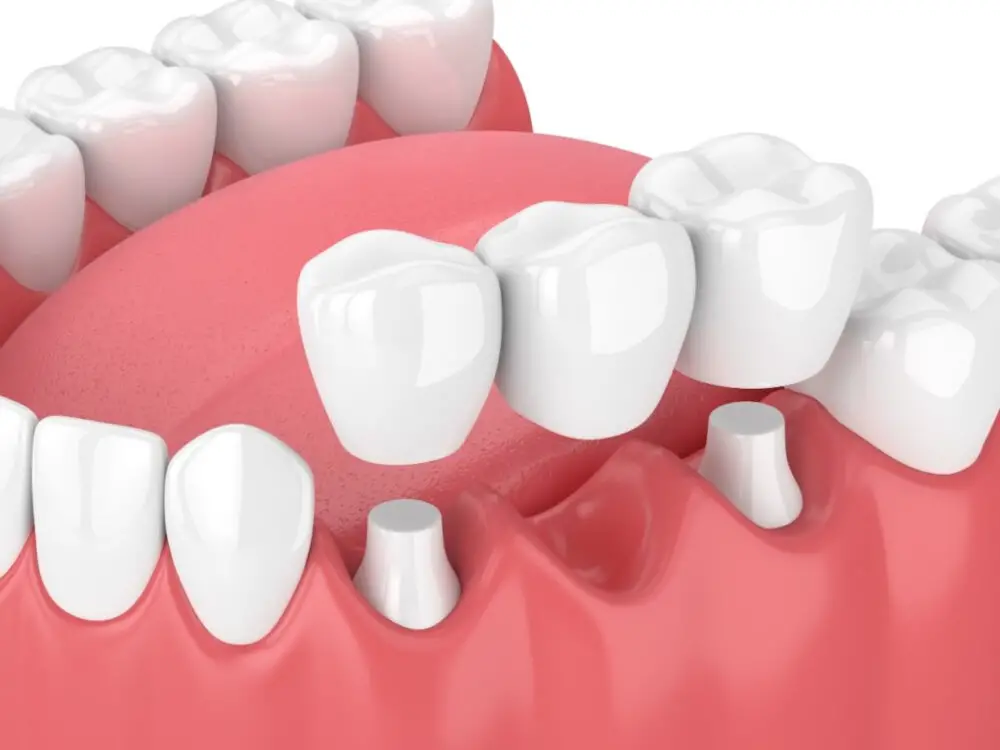
Brushing and flossing your teeth regularly is one of the most important things you can do to maintain good oral hygiene and prevent brown stains on your teeth near your gums. Brushing your teeth twice a day with fluoride toothpaste helps to remove plaque and bacteria that can lead to gum disease and stains. Make sure to use a soft-bristled toothbrush and gentle circular motions to avoid damaging your gums. Flossing is also important as it removes food particles and plaque from between your teeth and along your gum line. If you find traditional flossing difficult, try using floss picks or interdental brushes to make the process easier. In addition to brushing and flossing, there are other things you can do to prevent brown stains on your teeth near your gums. For example, avoiding or limiting your intake of foods and drinks that are known to stain teeth such as coffee, tea, red wine, and tobacco can help. Drinking plenty of water and chewing sugar-free gum can also help to stimulate saliva production, which helps to neutralize acid and prevent staining. If you have any concerns about brown stains on your teeth near your gums, it’s important to speak to your dentist who can provide you with tailored advice and treatment options to help you maintain good oral health.
Brushing and flossing are two essential practices that help maintain good oral hygiene. Brushing removes plaque and food particles from the surface of the teeth, preventing the buildup of harmful bacteria that cause tooth decay and gum disease. Flossing, on the other hand, cleans the spaces between teeth where a toothbrush can’t reach. Neglecting to brush and floss regularly can lead to the formation of brown stains on the teeth near the gums, which can be unsightly and difficult to remove. Therefore, it’s crucial to make brushing and flossing a part of your daily routine to prevent dental problems and keep your smile bright and healthy.
Brushing and flossing are crucial techniques to maintain healthy teeth and gums. To brush effectively, use a soft bristled toothbrush and fluoride toothpaste. Start by placing the brush at a 45-degree angle to your gums and use gentle circular motions to clean the outer surfaces of your teeth. Brush the inner surfaces and the chewing surfaces using the same circular motion. Don’t forget to brush your tongue to remove bacteria that cause bad breath. Flossing is equally important, as it removes plaque and food particles from between teeth and along the gum line. Use about 18 inches of floss and wrap it around your index fingers. Gently slide the floss between your teeth and curve it around the base of each tooth, making sure to go below the gum line. Repeat this process for each tooth using a clean section of floss each time. By incorporating these techniques into your daily routine, you can keep brown stains and other dental issues at bay.
Use Baking Soda and Hydrogen Peroxide

One of the most effective ways to combat brown stains on teeth near gums is to use a combination of baking soda and hydrogen peroxide. Baking soda, also known as sodium bicarbonate, is a mild abrasive that can gently remove surface stains from teeth. Hydrogen peroxide, on the other hand, is a powerful whitening agent that can penetrate deep into the tooth structure to remove stubborn stains. When these two ingredients are combined, they create a powerful teeth whitening solution that can help to brighten your smile and eliminate unsightly brown stains. To use baking soda and hydrogen peroxide to combat brown stains on teeth near gums, you should first mix a small amount of baking soda with a few drops of hydrogen peroxide to create a paste. You can then apply the paste directly to your teeth using a toothbrush or your fingers. Gently scrub the paste onto your teeth for a few minutes, making sure to focus on the areas where brown stains are most visible. After rinsing your mouth thoroughly with water, you should notice a significant improvement in the appearance of your teeth. With regular use, this simple and affordable teeth whitening solution can help you achieve the bright, healthy smile you’ve always wanted.
Baking soda and hydrogen peroxide are two common household items that can be used to brighten teeth and remove brown stains near the gums. Baking soda, also known as sodium bicarbonate, is a mild abrasive that helps to scrub away surface stains on the teeth. It also has a whitening effect due to its alkaline pH level, which helps to neutralize acids in the mouth that can erode tooth enamel. Hydrogen peroxide, on the other hand, is a bleaching agent that helps to further whiten teeth by breaking down stains on a molecular level. When used together, baking soda and hydrogen peroxide create a powerful cleaning solution that can help to remove even the toughest stains and leave teeth looking brighter and healthier.
Baking soda and hydrogen peroxide are both excellent natural ingredients that can help remove brown stains on teeth near gums. To use them, mix equal parts of baking soda and hydrogen peroxide to create a paste. Apply this paste on the stained area, gently scrubbing with a soft-bristled toothbrush for about two minutes. Rinse your mouth thoroughly with water, and repeat the process once a week until you see visible results. It is important to note that excessive use of this mixture can damage your tooth enamel, so it is recommended to use it in moderation. Additionally, it is essential to maintain good oral hygiene habits, such as brushing twice a day and flossing regularly, to prevent future stains from forming.
Avoid Certain Foods and Drinks
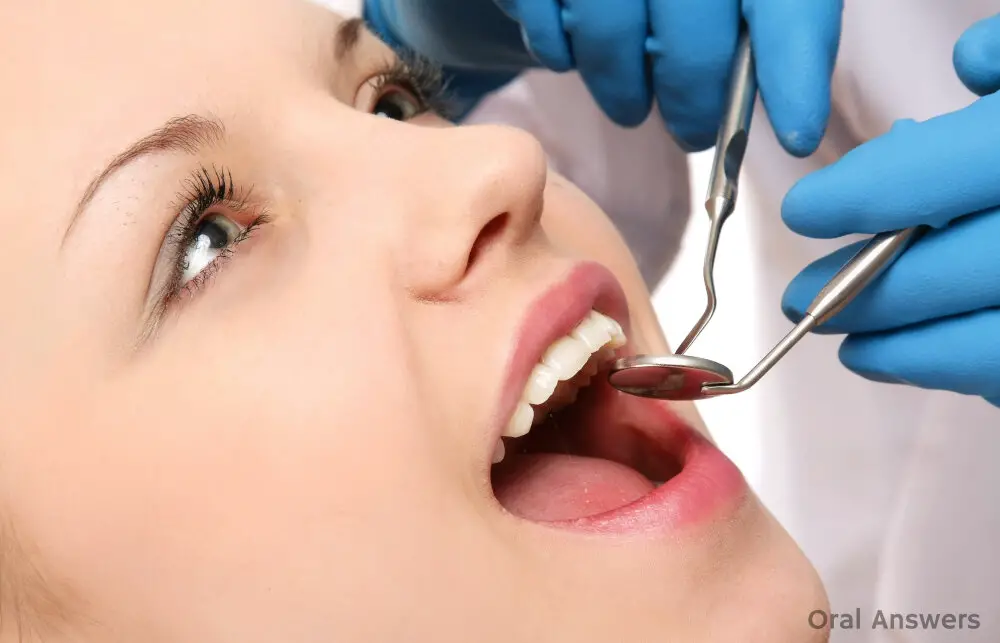
One of the most significant reasons for brown stains on teeth near gums is consuming certain foods and drinks that are notorious for staining teeth. Beverages such as coffee, tea, and red wine contain chromogens that are responsible for staining teeth. The tannins in tea and wine also cause tooth discoloration by binding to the teeth and making it easier for stains to adhere. Moreover, acidic drinks such as soda and fruit juices erode tooth enamel, which not only leads to tooth decay but also makes it easier for stains to penetrate the teeth. Avoiding or minimizing the intake of such foods and drinks can significantly reduce the occurrence of brown stains on teeth near gums. Another group of foods that contribute to brown stains on teeth near gums are those high in sugar and carbohydrates. Sugary and starchy foods such as candy, cakes, and cookies increase the production of bacteria in the mouth, leading to tooth decay and staining. Additionally, consuming sugary drinks such as sports drinks and energy drinks pose a similar risk to teeth. It is essential to limit the intake of sugary and starchy foods and drinks, and replace them with tooth-friendly alternatives such as fresh fruits, vegetables, and water. By avoiding certain foods and drinks that cause tooth staining, it is possible to maintain healthy and white teeth near gums.
Perhaps you’ve noticed brown stains on your teeth near your gums and have been wondering what might be causing them. One of the likely culprits is the food and drinks you consume. Certain foods and drinks contain pigments that can leave stains on your teeth. Coffee, tea, red wine, and colas are some of the most notorious offenders. These drinks contain chromogens, which are substances that can cause discoloration. Other foods and drinks that can cause staining include soy sauce, balsamic vinegar, berries, tomato sauce, and curry. While it’s not necessary to avoid these foods and drinks altogether, reducing your consumption or rinsing your mouth with water after consuming them can help prevent stains from forming.
Brown stains on teeth near gums can be caused by a variety of factors, including poor oral hygiene, certain foods and drinks, and smoking. Poor oral hygiene can lead to the buildup of plaque and tartar, which can cause discoloration and staining. Foods and drinks like coffee, tea, red wine, and dark-colored berries can also stain teeth over time. Smoking is another major culprit, as the nicotine and tar in cigarettes can leave stubborn brown stains on teeth. Additionally, certain medications and medical conditions can contribute to tooth discoloration. By understanding the causes of brown stains on teeth near gums, individuals can take steps to prevent and treat this common dental issue.
Try Natural Remedies

Natural remedies can be a great alternative to chemical-based products that promise to whiten teeth. Not only are they often more affordable, but they can also be gentler on sensitive teeth and gums. One popular natural remedy for removing brown stains on teeth near gums is baking soda. Baking soda is a mild abrasive that can effectively remove surface stains without damaging the enamel. To use baking soda as a natural teeth whitener, simply mix a small amount with water to create a paste. Apply the paste to your toothbrush and brush your teeth for two minutes. Rinse your mouth thoroughly with water afterwards. You can repeat this process once or twice a week. Another natural remedy for brown stains on teeth near gums is oil pulling. Oil pulling is an ancient Ayurvedic practice that involves swishing oil around in your mouth for a few minutes each day. The oil helps to remove bacteria and other toxins from your mouth, which can improve your oral health and whiten your teeth. Coconut oil is a popular choice for oil pulling, as it has antibacterial properties and a pleasant taste. To try oil pulling, simply put a tablespoon of coconut oil in your mouth and swish it around for 10-15 minutes. Spit the oil out and rinse your mouth with water afterwards. You can do this once a day for best results.
There are several natural remedies that can help remove brown stains on teeth near gums. One effective method is to mix baking soda with water to create a paste, which can be applied to the affected area and gently rubbed with a toothbrush. Another option is to use activated charcoal, which can absorb stains and toxins from the teeth. Oil pulling with coconut oil is also a popular remedy, as it can help remove plaque and bacteria that contribute to staining. Additionally, rubbing lemon or orange peel on the teeth can help remove surface stains due to their natural acidity. However, it is important to note that natural remedies may not work for everyone and it is always best to consult with a dentist for professional advice.
Brown stains on teeth near gums are not only unsightly but can also be a sign of poor oral hygiene. These stains are often caused by the buildup of plaque, which is a sticky film of bacteria that forms on teeth. Plaque can be removed by brushing and flossing regularly, but if left untreated, it can harden into tartar, which is much harder to remove. To prevent brown stains on teeth near gums, it is important to practice good oral hygiene habits such as brushing twice a day, flossing daily, and visiting the dentist regularly for cleanings. Additionally, avoiding foods and drinks that are known to stain teeth, such as coffee, tea, and red wine, can also help to prevent these unsightly stains from forming.
If you’re struggling with brown stains on your teeth near the gums, there are several tips you can try to remove them. First, make sure to brush your teeth regularly, especially after consuming foods and drinks that can cause staining. You can also try using a whitening toothpaste or mouthwash. Additionally, flossing daily can help remove any buildup between your teeth and along the gumline. If these methods don’t work, you may want to consider professional teeth whitening or dental cleaning. Remember, prevention is key, so try to limit your intake of foods and drinks that can cause staining, such as coffee, tea, and red wine. With a bit of effort and patience, you can say goodbye to those stubborn brown stains and achieve a brighter, healthier smile.
While home remedies and over-the-counter products can be effective in removing brown stains on teeth near gums, it is important to seek professional help if the stains persist. A dentist or dental hygienist has access to specialized tools and techniques that can effectively remove stubborn stains and prevent further damage to the teeth and gums. Moreover, a dental professional can identify the underlying cause of the stains, such as poor oral hygiene or a medical condition, and provide personalized recommendations to prevent future staining. By seeking professional help, individuals can ensure optimal oral health and a bright, confident smile.
Conclusion
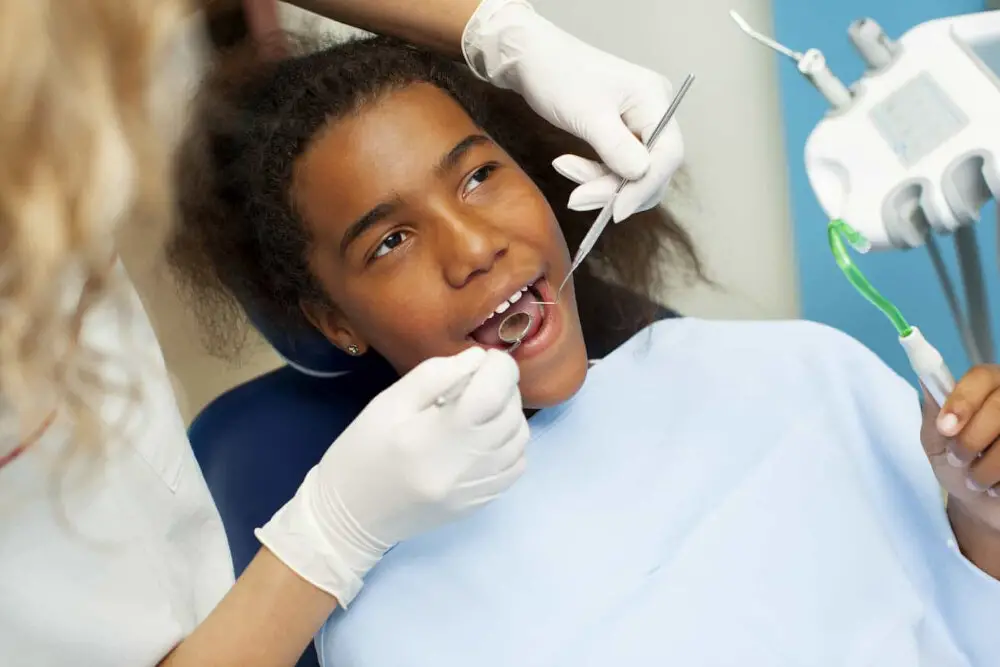
In conclusion, brown stains on teeth near gums can be a frustrating and unsightly problem. However, there are several simple tips that can help you say goodbye to these stains and restore the natural beauty of your smile. From regular brushing and flossing to using whitening toothpaste and avoiding foods and drinks that can stain your teeth, taking care of your dental health is key to keeping your teeth bright and healthy. So, don’t let brown stains on your teeth near gums bring you down – follow these simple tips and enjoy a brighter, more confident smile!

